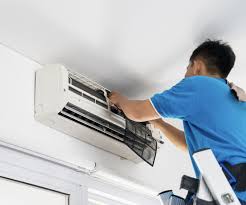
Load cells are used to convert the mechanical force into an electrical output. In simple words, they convert any force such as tension, compression, or torque into a measurable signal. This electrical output is measurable using units of measurement.
Load cells are available in various shapes, sizes, thus affecting their lifespan. For example, every object that needs to be weighed uses a load cell for getting an accurate reading. Compared to other sensors, load cells are more affordable, efficient, and have a longer lifespan. This article will learn more about load cells, their lifespans, and tips to maintain their accuracy throughout their life.
What is a Load Cell Lifespan?
A load cell lifespan is also known as fatigue life. It indicates the number of loads a load cell can take. For example, If the fatigue-life of a particular load cell is 100,000 times, it means that you can load the weight capacity 100,000 times.
The load cell will work beyond that but lose its efficiency and might start to give fluctuating readings. In general, you can use the load cell for upto ten years with regular maintenance and usage. Moreover, the lifespan of load cells differs based on the material used to make them. Load cells are made of aluminum alloy, steel alloy, and stainless steel. Thus, the lifespan of your load cell will largely depend on which load cell you are using.
Load cells are available almost everywhere globally; however, if you stay in Australia and need to buy high-quality load cells, you must check out Millenium Mechatronics. It is a company situated in Australia and provides products all over the country. They offer a wide range of load cells made from aluminum alloy, stainless steel, and steel alloy. Interestingly, the load cells are available at the most affordable prices with accurate efficiency.
How to Determine if the Load Cells are Damaged?
You can conduct several tests to determine if the load cell is damaged or not in the condition to perform to its best capacity. You can run physical and electrical checks to ensure the load cell is in the proper working condition. Also, if the load cells fail any test, you will not have to run any further tests.
Physical Test
Signs of Damage: The first step to check if your load cell is broken is to look for any noticeable indications of damage on the outside. You can also check the interiors and look for any cuts, excessive aggression, exposed wires, or crimps on the cell. If you find any damage, you need to replace the load cell.
Dents: checking the load cell for dents, deformation, corrosion, etc., is a difficult task. A load cell has sensitive components which can get damaged due to dropping or being hit by something.
Inspection for Flatness: If you are using a single point and double-ended load cell, you need to do a visual inspection check for the flatness of the cell. You can use the flashlight technique to inspect the load cell. Use a straightedge and run the flashlight through the load cell, ensuring no deflection or bucking marks on the cell.
If your load cell fails any of the above-mentioned physical tests, you will need to change it because, with minimal damage, it loses its potential to deliver the best results. It starts giving fluctuating figures and sometimes might even stop working.
Electrical Test
The mV/V value test: The mV/V value test is important to check if the ratio is within the tolerance range as mentioned on the calibration certificate of the load cell. To determine this ratio, you have to position the load cell without any load attached to it. Now, connect it to a low noise but stable power supply and measure the output voltage in mV using a multimeter. Check the input voltage and calculate the ratio for mV/V. Refer to the range mentioned on the certificate for the load cell and ensure that the ratio is within the acceptable range.
The Insulation Check: You can use a multimeter to check the resistance of the wire that leads to the metal body. Ensure that the resistance range is within the prescribed range. Any above or below the mentioned range means that the load cell has bad insulation and needs to be replaced.
Additionally, you should also check the resistance level of all the strain gauges one at a time.
Final Words
All the load cells come with a fatigue life mentioned on their packaging. Fatigue life is an indicator of how long the load cell will work efficiently. Generally, a load cell can work for upto ten years if it has no dents, electrical shock, or deflections. However, a damaged load cell has to be replaced as even a minor deflection has a deep impact on the efficiency of the load cell. Therefore, you can perform the above tests to determine if your load cell is working fine or needs replacement.
